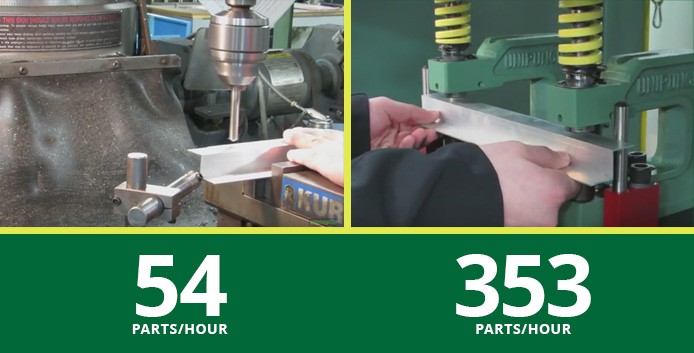
Crafting the perfect metal punch and die set requires precision, expertise, and attention to detail. Whether you’re a seasoned professional or a novice in the field of metalworking, mastering the art of punch and die design can significantly enhance the efficiency and quality of your manufacturing processes. In this comprehensive guide, we’ll explore eight essential tips to help you craft the perfect metal punch and die set, ensuring optimal performance, durability, and accuracy in your metalworking endeavors.
Understand Your Material
Before designing your punch and die set, it’s crucial to have a thorough understanding of the material you’ll be working with. Different metals have varying properties, including hardness, thickness, and ductility, which can influence the design and specifications of your punch and die. Conduct research on the specific material properties and requirements to ensure that your punch and die set is tailored to deliver precise and consistent results.
Choose the Right Tool Steel
Selecting the appropriate tool steel for your punch and die set is essential for achieving durability and longevity. Tool steels are specially designed to withstand the high impact and wear associated with metalworking processes. Consider factors such as hardness, toughness, and abrasion resistance when choosing the tool steel for your punch and die components. High-speed steels (HSS) and powdered metallurgy steels are popular choices for their exceptional performance in demanding metalworking applications.
Optimize Clearance and Shear Angle
The clearance and shear angle of your punch and die play a critical role in achieving clean and precise cuts in the metal. Proper clearance ensures sufficient space for the metal to deform and flow during the punching process, reducing burrs and distortion. Similarly, optimizing the shear angle of the punch and die minimizes friction and enhances the cutting action, resulting in smoother edges and improved dimensional accuracy in the finished parts.
Pay Attention to Punch and Die Alignment
Maintaining precise alignment between the punch and die is essential for achieving consistent and accurate results in metal punching operations. Misalignment can lead to uneven wear, tool damage, and poor-quality cuts. Use precision measuring tools and alignment fixtures to ensure that the punch and die are perfectly aligned before and during the punching process. Regular inspection and adjustment of alignment are necessary to prevent issues and prolong the lifespan of your punch and die set.
Consider Surface Coatings
Applying surface coatings to your punch and die components can significantly enhance their performance and durability. Coatings such as titanium nitride (TiN), titanium carbonitride (TiCN), and diamond-like carbon (DLC) provide excellent wear resistance, reduce friction, and prevent galling and adhesion during metalworking operations. Choose a coating that is compatible with your material and application requirements to maximize the longevity and efficiency of your punch and die set.
Implement Proper Lubrication
Proper lubrication is crucial for reducing friction, heat buildup, and tool wear during metal punching operations. Apply lubricants or cutting fluids to the punch and die surfaces to facilitate smooth movement and chip evacuation, improving the overall efficiency and quality of the punching process. Select lubricants that are compatible with your material and machining conditions, and ensure regular replenishment to maintain optimal lubrication levels throughout the operation.
Perform Regular Maintenance
Regular maintenance is essential for preserving the performance and longevity of your metal punch and die set. Inspect the components regularly for signs of wear, damage, or misalignment, and address any issues promptly to prevent further damage or production delays. Clean the punch and die surfaces thoroughly after each use to remove debris, contaminants, and residual lubricants that can affect cutting performance. Implement a comprehensive maintenance schedule that includes sharpening, regrinding, and replacement of worn components to ensure consistent and reliable operation over time.
Test and Iterate
Finally, don’t hesitate to test and iterate on your punch and die designs to achieve the desired results. Conduct trial runs with different parameters, such as feed rate, punch speed, and die clearance, to optimize the cutting performance and quality of your metal punch and die set. Gather feedback from operators and machinists, and incorporate their insights into refining your designs and processes. Continuous improvement is key to mastering the craft of metalworking and achieving excellence in punch and die design.
Conclusion
In conclusion, crafting the perfect metal punch and die set requires a combination of technical expertise, precision engineering, and practical experience. By following these eight tips and leveraging the latest tools and technologies, you can design and manufacture punch and die components that deliver exceptional performance, durability, and accuracy in your metalworking operations. Whether you’re fabricating automotive parts, aerospace components, or precision instruments, investing in a well-designed and meticulously crafted metal punch and die set is essential for achieving superior results and maintaining a competitive edge in the industry.




